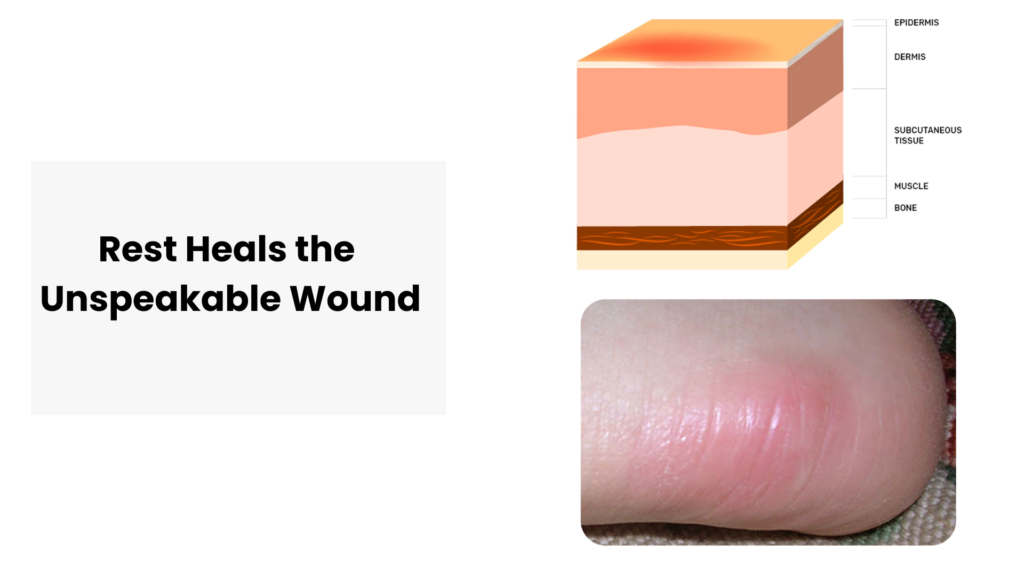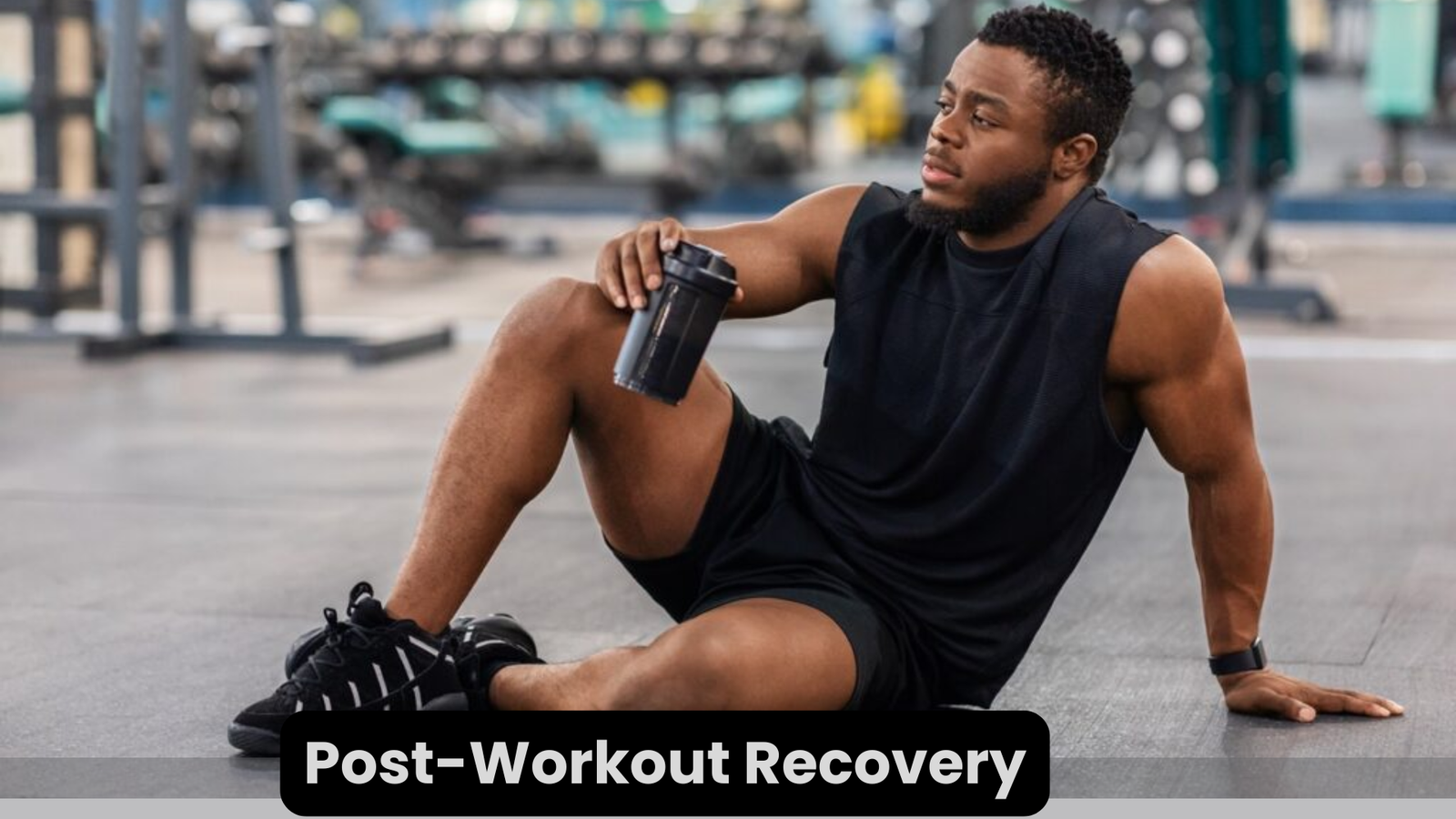Hello, fitness enthusiasts! Ready for the next step on how to bounce back even stronger?
Despite the fact that marathon running, weight lifting, or sports competitions have different approaches, post-workout recovery is inevitable. The proper approach to muscle recovery is all about enhancing the effectiveness of your workout session, reducing the amount of discomfort you might be experiencing, and preparing for that next exercise session.
In this article, I will share the best post-workout recovery for men in 2025 to get the best outcome quicker and more efficiently. We will also discuss how to recover, explaining recommended recovery techniques supported by the available scientific literature.
Table of Contents
Let’s get started!
Rest Heals the Unspeakable Wound

Rest is the most essential part of workout recovery. Even though one may be forced to rush back into the gym to develop another energetic exercise, it is important to allow the muscles to rebuild to enable more mass and strength.
Why Sleep is Key for Recovery
- Sleep is how the body is renewed or repaired for the next day’s activities. Throughout the night, to assist in restoring your body secretes growth hormones on the damaged muscle tissue during your training session.
- As the National Sleep Foundation describes, adults require 7-9 hours of rest each night to experience adequate recovery.
- Sleep also maintains the immune system, which is the machinery that helps you handle fatigue and remain healthy.
How Sleep Affects Performance
Research has found that sleep helps athletes think better, improve alertness, and have enough energy for the next training session. For instance, a study conducted by the Journal for Sports Sciences acknowledged that athletes who slept for 8 hours at night improved their power, fatigue, muscle strength, endurance, and reaction time.
Stay Hydrated Keep Your Muscles Fluid
People should pay proper attention to a few things after the exercise regime, one of which is dehydration. Dehydration results in muscle cramps and fatigue, and muscles take longer to recuperate after exercising. Replacing the fluids lost during exercise is recommended to support better body functioning.
How Much Water Do You Need?
- Drinking at least 16-20 ounces of water during and after any physical training is advisable.
- You can drink a sports drink or an electrolyte solution for those of you who are drenched in sweat.
Benefits of Proper Hydration
- Research evidence revealed that a 2% decrease in fluid intake decreases exercise performance and extends the time required for restoration. Sports and physical activities: Bulls Eye: The American College of Sports Medicine’s top advice for warding off injury and speeding recovery is to drink water.
- Drinking water enhances the flow of nutrients to muscle tissues and helps maintain the sound health of joints.
Nutrition Fuels Muscle Repair
You should understand that depending on what you eat after your workout, your muscles will recover quickly and efficiently or the other way around. They need protein to regain the damaged or broken muscle fibers, while carbohydrates, which make up glycogen deposits, give the body energy for the next session.
Muscles’ Recovery After Exercises
- Protein: Ideally, one should consume 20-30 grams of protein after completing a workout in the next 30 minutes. Some fine examples include whey protein, chicken, turkey, and legumes.
- Carbohydrates: During a workout, glycogen is broken down in muscles, so glycogen energy is needed once again after a workout. Some examples of healthy sources of carbohydrates are green-leafed vegetables, sweet potatoes, grains including brown rice and quinoa, and some fruits.
- Fats: It is important to note that not all fats are bad. Healthy fats such as avocado, olive oil, and nuts aid in the general health of growing muscles as well as their recovery.
Timing Is Everything
Most people overlook one crucial factor: the time you take to eat after your workout. The study’s findings showed that eating a combination of protein and carbohydrates 30 minutes to 2 hours after the exercise session has added benefits to the recovery and muscle-building processes. This time window is described as the “anabolic window.
Light Exercise to Promote Blood Flow
Rest is necessary, but avoid engaging in any activity at all post-exercise, especially when one has been under a vigorous workout program. Another way of exercising mainly involves performing low-intensity activities, including exercises involving the moving of all the joints. These help in circulation and eradicate metabolic waste products that cause muscle soreness.
Examples of Active Recovery
- Light Jogging or Walking: Tense muscles are also advantageous during the day, meaning that 20-30 minutes of light jogging or some form of light walking would go a long way toward helping the circulation of the muscles and joints.
- Foam Rolling or Stretching: Swelling can be managed by massaging contracted muscles, enhancing mobility, and reducing soreness in a muscle after exercise.
Benefits of Active Recovery
According to a study conducted in the Journal of Strength and Conditioning Research, low-intensity aerobic exercises and stretching help alleviate DOMS and actually decrease the overall time needed to recover.
Cold and Heat Ease Inflammation
Heating and icing is a common technique that can be used to minimize muscle inflammation, soreness, and general tightness in the muscles after an intense workout session. This kind of Wang Xin or cold bath, hot water shower, or sauna can enhance the recovery process and relieve pain.
Cold Therapy (Cryotherapy)
- How it Works: Cold water therapy shrinks muscles and relieves the area through numbing, helping to minimize Inflammation and pain.
- How to Use It: After exercise, one should take a cold shower and use an ice pack for about 15-20 minutes to reduce muscle inflammation.
Heat Therapy
- How to Use It: A warm shower, heating pad, or bath can help with muscle relaxation and increased flexibility.
- How it Works: Therapeutic heat enhances muscle circulation, giving damaged muscles more oxygen and nutrients.
- The following video explain about: Cold and Heat Ease Inflammation
Science-Backed Supplements Boost Recovery
Nutrition is, however, the most dominant factor in the whole recovery process. Though some foods can contribute to the speeding up of the said process, some supplements, too, can actually assist in the speeding up of the said process. Protein powder, creatine monohydrate, BCAAs (branched-chain amino acids), and glutamine are a few supplements that are said to have positive effects on muscle buildup and coming back to a state after workouts.
Most Liked Supplements for Recovery
- Glutamine has a unique amino acid that helps recover muscle tissue and a sound immune system.
- Protein Powder: We also need to realize that whey protein, casein, and plant protein powders are sources of proteins that aid in repairing muscle tissues.
- Creatine: Creatine enhances energy and muscular repair, so ATP in the body and Amino acids are replenished.
- BCAAs: Protein is also made of these amino acids, which rebuild muscle tissue, repair damaged muscles, and prevent muscle soreness.
Scientific Support

An article published in the Journal of the International Society of Sports Nutrition proved that supplements like protein and BCAAs help minimize muscle breakdown and pain and shorten the time required for recovery after a training session.
- Stay Consistent: Here, the reader can find information about the long-term benefits of recovery habits.
Lastly, the study of the relationship between consistent recovery and fitness results in better long-term results. It’s not like this one lovely day; now we are all rescues. Recovery needs to be a habitual pattern.
Building a Recovery Routine
- Regular imbibing water, proper nutrition, and bedroom rest are essential to your post-workout plan.
- Continue to measure your advancement, record your levels of muscle pain, and change your recovery methods to fit the results obtained.
The Science of Consistently
A study in Frontiers in Physiology demonstrated that such a lifestyle reduces the likelihood of developing overtraining syndrome and that performance improvement is achieved over time.
Conclusion
Recovery after the workout session is as important as the workout itself, if not more so. Applying the above summarized top post-workout recovery tips will allow your muscle tissues to rest and feed at the correct rate to rebuild faster, better, and healthier. Take enough relaxation and sleep, drink plenty of water, eat nutritious food, and incorporate recovery processes to avoid tightness and pain.
It is always important to apply good habits. The recovery pattern followed now will help to achieve better outcomes in the future. Here’s to better health, a much speedier recovery, and increased strength in the new year!
FAQs
1.When is the best time to exercise again if one has had a rigorous form of exercise?
Usually, you should wait for 48 hours before working the same muscles again so that the body can heal itself to some extent. Walking, light exercising, or moderate-intensity activities can be considered active recovery.
2.What should a man eat after exercise?
The best protein combination is chicken, turkey, or protein powder, with a choice of sweet potatoes or brown rice for carbohydrates.
3.How can I make my recovery quicker through supplements?
To answer your question, yes, you need supplements such as protein powder, BCAAs, and creatine to aid recovery when accompanied by a good diet and sleep.




